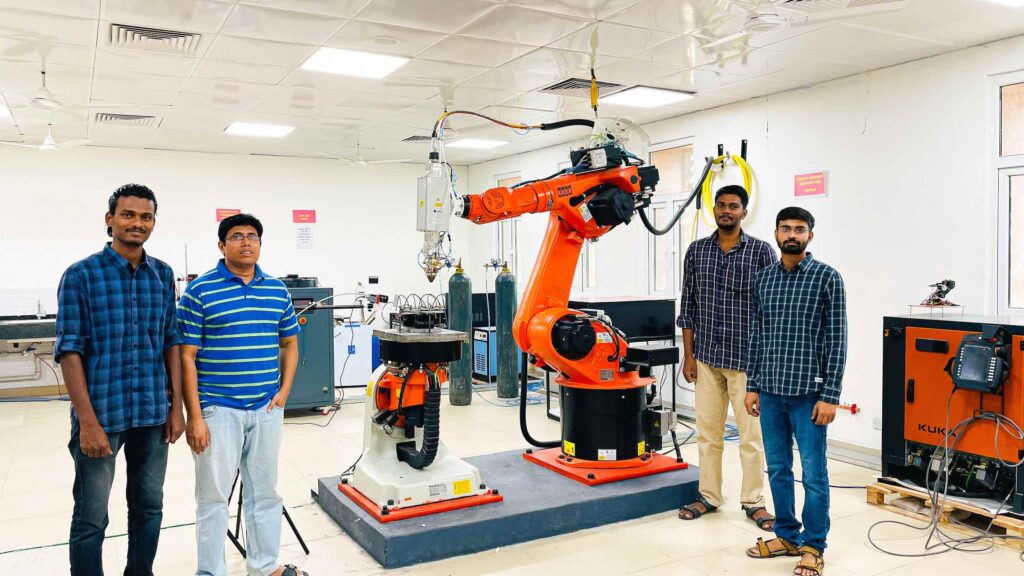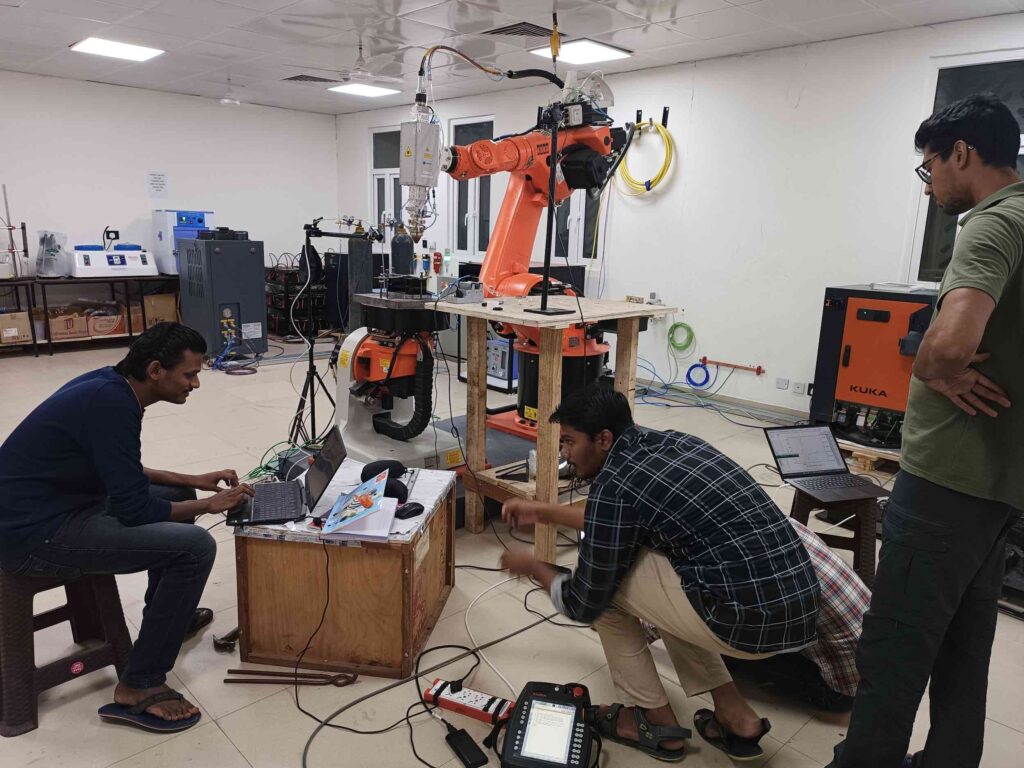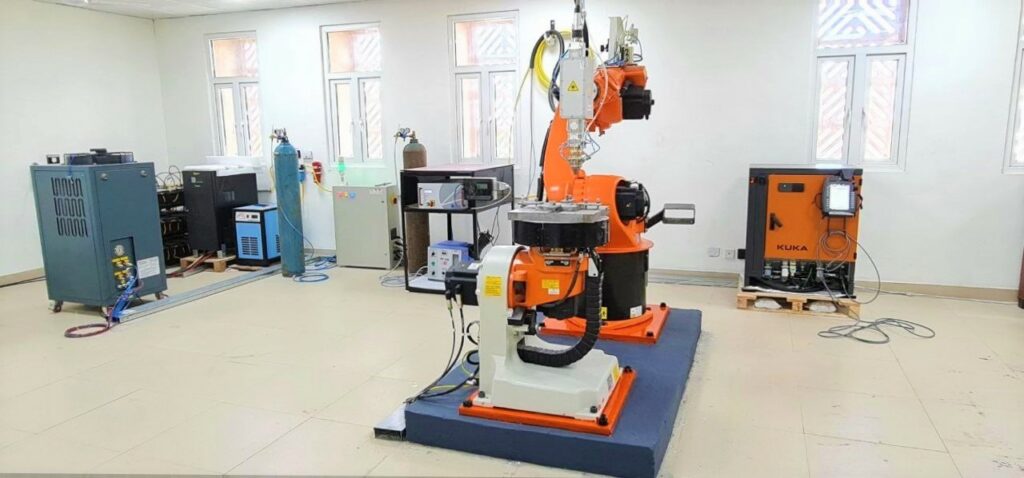Engineers from the Indian Institute of Technology (IIT), Jodhpur, have developed their own low-cost metal 3D printing system based on Directed Energy Deposition (DED) technology.
The machine is special in that it was largely indigenously developed, meaning all of the components except the laser and KUKA robotic arm were designed and manufactured by the IIT team in India. The main aim of the project was to slash the cost of metal 3D printing technology in the country, while garnering more users and driving adoption.
Dr. Ravi K. R., an Associate Professor at IIT Jodhpur, explains, “Our study results show that if all the parts needed to make a metal printing machine could be manufactured indigenously, the cost of a metal 3D printing machine could be reduced by two to three times.”
Suitable for use in aerospace, defense, and other engineering sectors, the homegrown 3D printer is designed primarily for laser cladding and maintenance and repair applications, adding material to existing metal components.

The cost of metal 3D printing in India
Additive manufacturing has seen incredible growth around the world since its debut in the 1980s, but emerging markets like India have been slow to hop on the bandwagon due to prohibitive costs. As well as the 3D printers themselves being too pricey, importing metal powders from abroad contributes to ongoing operational costs that are simply too high for many manufacturing SMEs to stomach.
“Despite the fact that metal 3D printing technology started a few years after the launch of Polymer 3D printing, it is yet to experience the tremendous growth that the polymer 3D industry has achieved, especially in India,” adds Ravi. “The high price of the product and the more expensive proprietary metal powders imported from abroad are some of the reasons for the limited growth of metal 3D printers.”
The IIT team asserts that affordable metal 3D printing technologies, particularly ones developed in India, will play a key role in helping the nation keep up with the rest of the world.

An indigenous DED 3D printer
The robotic arm-based IIT 3D printer operates on DED technology, a form of 3D printing that leverages a focused energy source to melt and fuse materials as they’re deposited out of a nozzle. This energy source can be an electron beam or a plasma arc, but this particular model utilizes the commonly-used laser beam.
Capable of 3D printing metal powders produced in India, the system reportedly features the country’s first variable spot size laser optics that can preserve laser beam homogeneity.
Additionally, the team has even developed a dedicated tool path planning software and coaxial nozzle for the 3D printer. They have also integrated in-situ monitoring processes that track the temperature of the melt pool and thickness of the printed clad at all times, enabling high-performance industrial applications to be realized.
Ravi said, “Such an initiative further strengthens the policy decisions of the Government of India under the ‘Atmanirbhar Bharat’ initiative.”

The commercial metal 3D printing space is as active as ever with the latest system launches. Just this month, 3D printer manufacturer Velo3D announced the launch of its largest 3D printer to date, the Sapphire XC 1MZ. The laser powder bed fusion system features a huge build volume of 600mm (dia.) x 1000mm, which is nine times larger than the original Sapphire and twice as large as the Sapphire XC.
Elsewhere, Cranfield University spin-out WAAM3D recently launched an all-new large-format 3D printer operating on the firm’s Wire Arc Additive Manufacturing (WAAM) technology. Named RoboWAAM, the metal printer sports a huge build volume of 2 x 2 x 2m and is packed full of new sensing hardware to serve customers in aerospace, defense, energy, and more.
